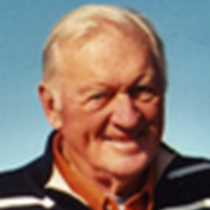LeConte Bay and Petersburg, Alaska
Under the spell of Hutli, the Tlingit mythical thunderbird (his wings cause loud calving of the LeConte Glacier), Zodiacs carrying guests wound their way between icebergs and along the bay’s shoreline. Gulls, bald eagles and harbor seals were seen. The milky water – caused by glacier melt – was unruffled and calm. The bay and glacier were named in 1887 by Lt.-Commander C. M. Thomas, USN, for Joseph LeConte, professor of geology at the University of California.
During lunch the Sea Lion cruised to the scenic fishing town of Petersburg at the north end of Mitkof Island. Founded by Norwegian Peter Thams Buschmann, this tidy community delights in emphasizing its Nordic roots, including examples of Norwegian art, colors, baked goods, folk dancing and a large Sons of Norway hall. During the afternoon guests moved in several directions: floatplane tours; casual and long town hikes; and bog walks near the town and on Kupreanof Island across the head of 30-mile-long Wrangell Narrows. The bog walks – one along Petersburg Creek and the other on a boardwalk constructed to protect fragile muskeg – produced examples of Sitka spruce, a circus of slugs, budding spring roots, carnivorous plants, Steller jays, and the usual suspects from the world of water insects.
Recap offered the work, with narrated slides, of Andy Szabo and Pat Sharpe of the Alaska Whale Foundation. Andy reviewed his sometimes tedious work in Frederick Sound, where he has been trying to estimate the health, feeding habits, movements and population of humpback whales.
The day closed with a demonstration of how to attack fresh-cooked Dungeness crab, followed by the week’s special dinner of Dungeness crab, corn, beef ribs and cole slaw.
Under the spell of Hutli, the Tlingit mythical thunderbird (his wings cause loud calving of the LeConte Glacier), Zodiacs carrying guests wound their way between icebergs and along the bay’s shoreline. Gulls, bald eagles and harbor seals were seen. The milky water – caused by glacier melt – was unruffled and calm. The bay and glacier were named in 1887 by Lt.-Commander C. M. Thomas, USN, for Joseph LeConte, professor of geology at the University of California.
During lunch the Sea Lion cruised to the scenic fishing town of Petersburg at the north end of Mitkof Island. Founded by Norwegian Peter Thams Buschmann, this tidy community delights in emphasizing its Nordic roots, including examples of Norwegian art, colors, baked goods, folk dancing and a large Sons of Norway hall. During the afternoon guests moved in several directions: floatplane tours; casual and long town hikes; and bog walks near the town and on Kupreanof Island across the head of 30-mile-long Wrangell Narrows. The bog walks – one along Petersburg Creek and the other on a boardwalk constructed to protect fragile muskeg – produced examples of Sitka spruce, a circus of slugs, budding spring roots, carnivorous plants, Steller jays, and the usual suspects from the world of water insects.
Recap offered the work, with narrated slides, of Andy Szabo and Pat Sharpe of the Alaska Whale Foundation. Andy reviewed his sometimes tedious work in Frederick Sound, where he has been trying to estimate the health, feeding habits, movements and population of humpback whales.
The day closed with a demonstration of how to attack fresh-cooked Dungeness crab, followed by the week’s special dinner of Dungeness crab, corn, beef ribs and cole slaw.




